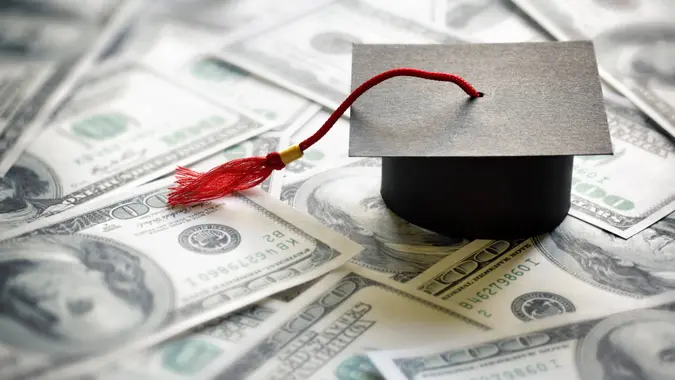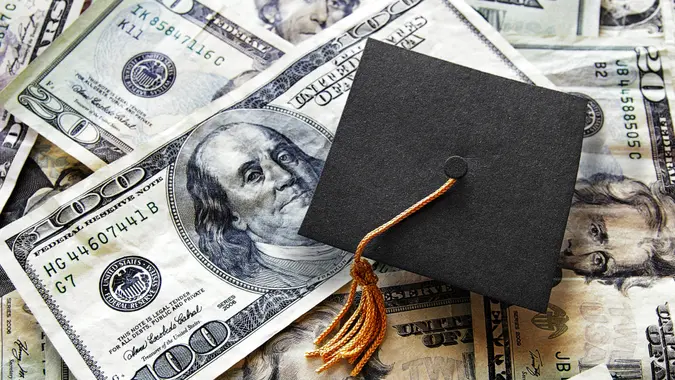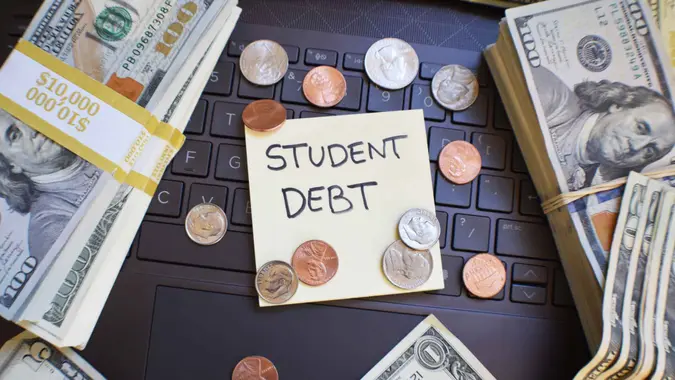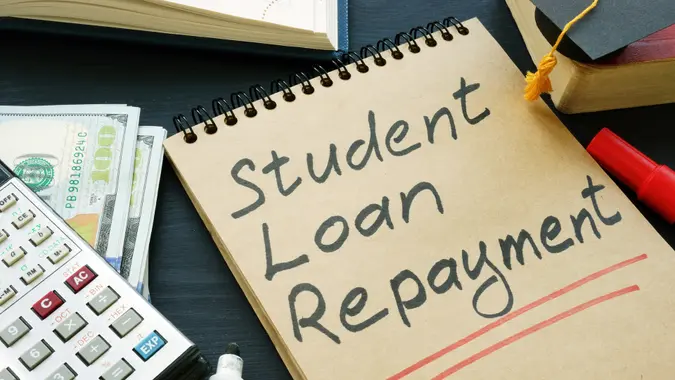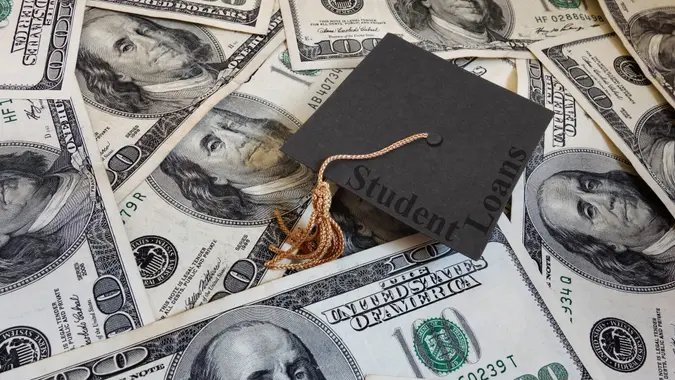How To Prioritize Your Payments When Both Parents and Kids Have Student Loan Debt

Commitment to Our Readers
GOBankingRates' editorial team is committed to bringing you unbiased reviews and information. We use data-driven methodologies to evaluate financial products and services - our reviews and ratings are not influenced by advertisers. You can read more about our editorial guidelines and our products and services review methodology.

20 Years
Helping You Live Richer

Reviewed
by Experts

Trusted by
Millions of Readers
A growing number of American families now have parents and kids who both have student loans. These households must make tough decisions about how to prioritize repayment.
For example, should you pay off your kids’ loans first? Or is it better to focus on your own finances and let them do the same? The answer can depend on several factors.
Questions To Ask When Deciding Which Loans To Pay First
There’s no one-size-fits-all solution to student loan repayment. Asking your family the following questions can help you find the right strategy for you.
Who Has the Highest Interest Rate?
Interest is the cost of borrowing money. The higher the rate, the more expensive the loan. That’s why you should begin by considering interest rates across your family’s student loans. If someone’s rate is especially high, you may want to pay off that loan first. Doing so will save you money by reducing the amount the family pays in interest.
This method of debt repayment is often called the debt avalanche.
Does Anyone Have Private Educational Loans?
Federal student loans have a variety of income-based repayment plans, which can significantly reduce your monthly payments. Private student loans aren’t as flexible. You typically have to make your full payment every month or risk default.
That’s why you generally want to pay private student loans first. Even if you can afford the full payment today, your financial situation can change. You don’t want to have to continue making your full payment even if your income declines significantly.
Who’s Closer to Full Repayment?
Your family can also look at who’s closest to paying off their student loans. It may be worth prioritizing this person’s debt to remove the loan from your monthly expenses. Doing so can give you some financial breathing room and reduce stress.
Once you pay off the first loan, you can move on to the next closest to full repayment, and so on. This is often called the debt snowball.
How Does Student Loan Debt Impact Each Person’s Financial Future?
Your family’s repayment strategy can also depend on each person’s financial goals. For example, maybe your children moved back home for financial reasons. You could help them pay off their loans first, so they can begin their independent lives faster. Or maybe your loans are keeping you from retirement, and your kids are doing well financially. If so, they may be willing to prioritize your repayment to help you retire on time.
How To Prioritize Your Family’s Student Loan Payments
Once you decide which student loans to prioritize, you’ll need a financial strategy to make it happen. Here’s a process you can follow if you’re unsure how to proceed.
1. Reduce Your Other Student Loan Payments
Prioritizing one student loan often means neglecting others for a time. That’s OK if you need to do it, but you can’t let your family’s other loans go into default — always make the minimum payment on time for each loan, if you’re able to.
If you can’t make the current minimums — or if they’re putting serious strain on your finances in other ways — you may be able to take advantage of alternative federal student loan repayment options. These reduce your monthly payment, which opens up more cash to pay down your highest-priority loan first.
Options include:
- Pay As You Earn (PAYE)
- Revised Pay As You Earn (REPAYE)
- Saving on a Valuable Education (SAVE)
- Income-Based Repayment (IBR)
- Income-Contingent Repayment (ICR)
SAVE is the newest repayment plan and may leave you with the lowest monthly payment. You’ll just have to pay 5% of your discretionary income to keep the loan out of default.
However, there are pros and cons to every repayment plan, and the best fit for your family can vary. You can use online student loan repayment calculators to see how your finances would change under each option.
2. Put the Extra Cash Toward Your Prioritized Loan
When you reduce your family’s other student loan payments, it frees up cash you can allocate to the prioritized debt. Try to put as much as possible toward the loan, so you can pay it off faster.
3. Repeat
Once you pay off your family’s first student loan, you can repeat this process for any remaining loans you have. It’s also worth noting that alternative repayment plans cap the number of years you have to make payments.
For example, the SAVE plan forgives any remaining loan balance you have after you make 20 years of qualifying payments. Depending on your finances, it could make sense to focus on running out this clock instead of paying off some of your student loans in full.
Just be aware that the government taxes any forgiven student loan debt as income. That means if you use this strategy, you could have a sizeable tax bill at the end of the 20-year repayment period.
 Written by
Written by  Edited by
Edited by 



